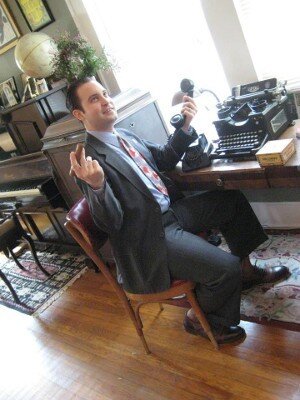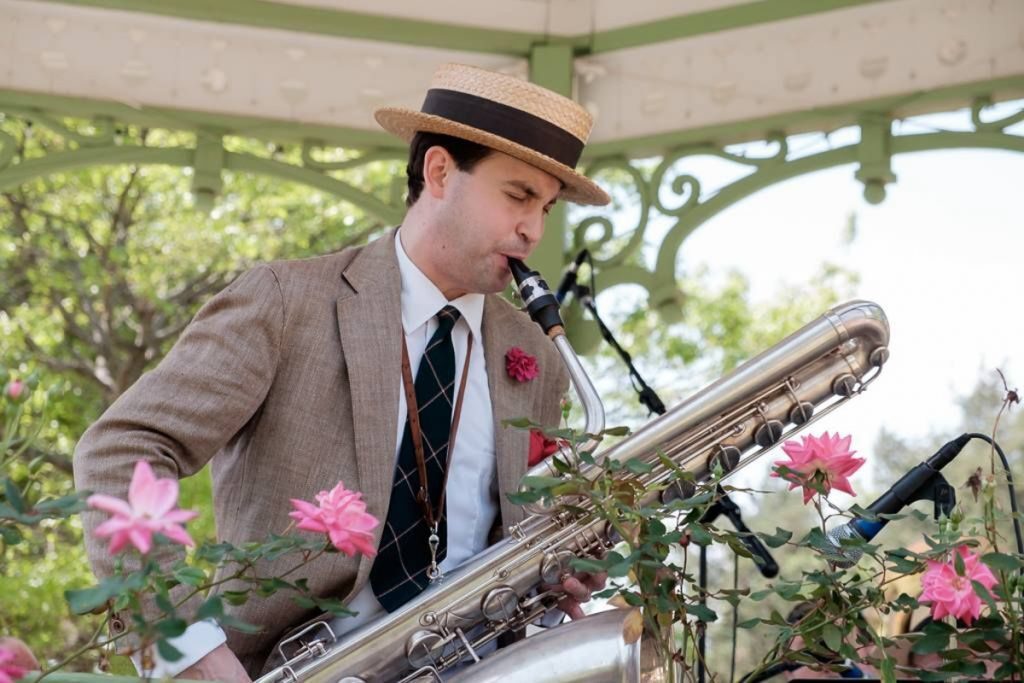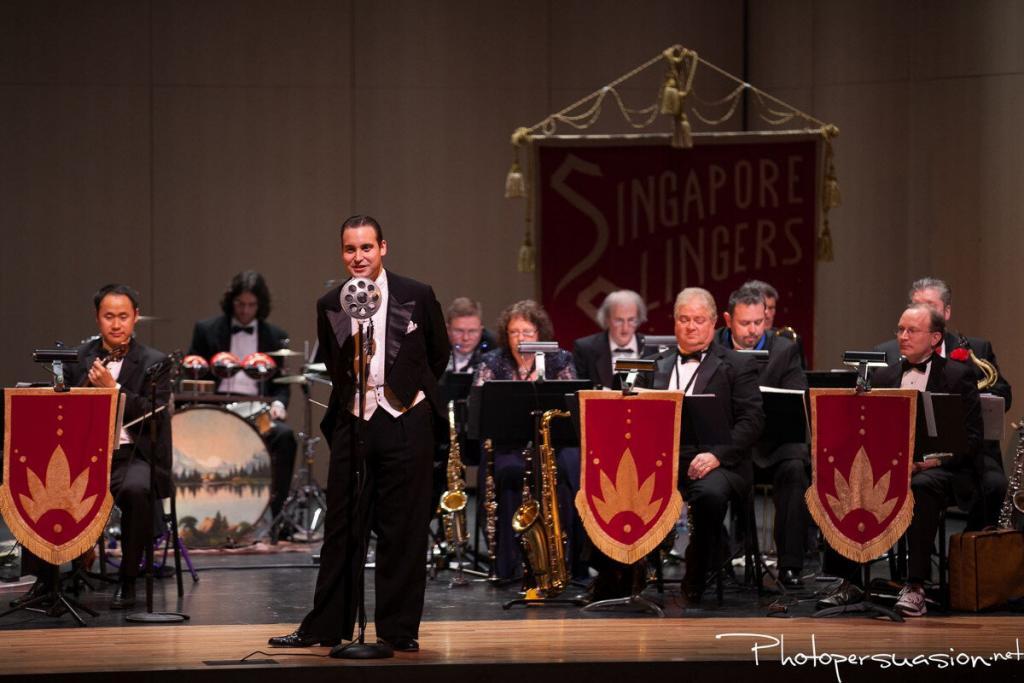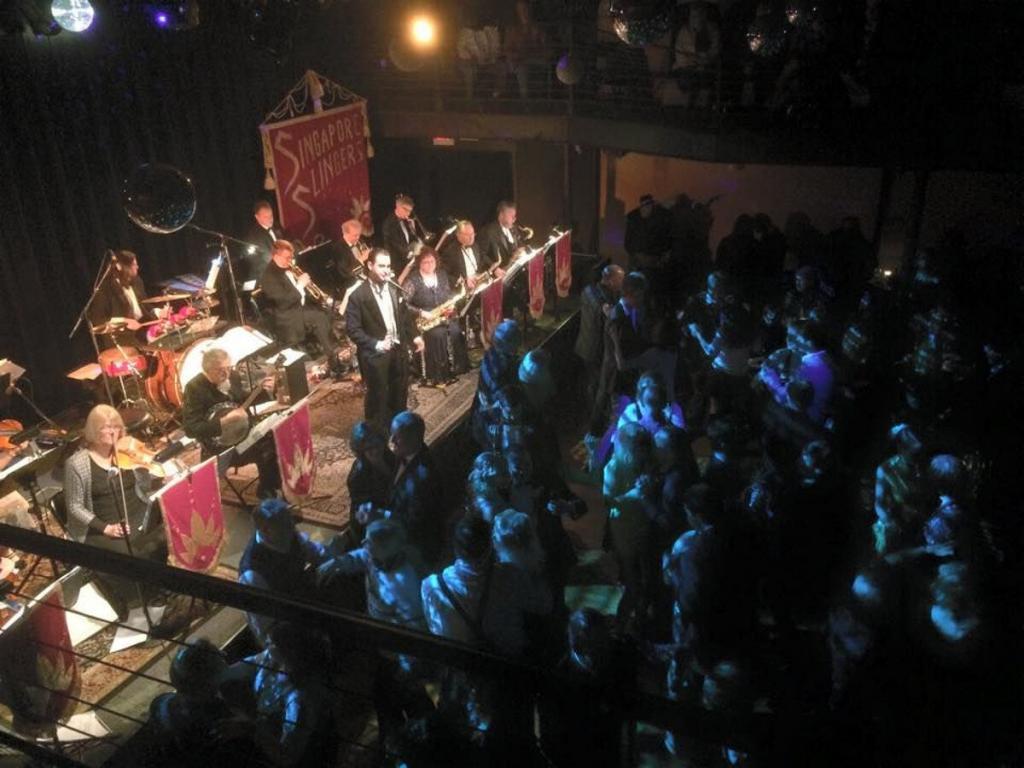At the West Coast Ragtime Festival in November I sat down for about half an hour for a wide-ranging conversation with multi-instrumentalist Matt Tolentino, who was performing there. I was familiar with him from his recordings but we had never met. He and his wife Danielle Benningnus recently moved from Dallas to Cincinnati, and that was the lead-off for our discussion.
Matt was the subject of an article in this paper in April, 2016, and there’s a lot of information about him on his website. So this conversation focused on his recent and upcoming activities.
Bill Hoffman: What made you decide to move to Cincinnati?
 Matt Tolentino: It was a combination of things. Dallas has gotten very expensive. I’m a full-time musician and Danielle is a full-time pen-and-ink artist. It was getting harder and harder for us to manage there. I had been to Cincinnati a few times, and Danielle is from there, so we didn’t have to throw a dart at a map to find a place. Although it’s smaller than Dallas, it’s within a reasonable drive of Chicago, St. Louis, Indianapolis, Louisville and other places that have active music scenes. In addition, Danielle and I are big into old things. Music is just one facet of that.
Matt Tolentino: It was a combination of things. Dallas has gotten very expensive. I’m a full-time musician and Danielle is a full-time pen-and-ink artist. It was getting harder and harder for us to manage there. I had been to Cincinnati a few times, and Danielle is from there, so we didn’t have to throw a dart at a map to find a place. Although it’s smaller than Dallas, it’s within a reasonable drive of Chicago, St. Louis, Indianapolis, Louisville and other places that have active music scenes. In addition, Danielle and I are big into old things. Music is just one facet of that.
We bought an 1890 house in Cincinnati in excellent condition, with all the major systems upgraded. All it needs is cosmetic work, which we’re prepared to do ourselves. We couldn’t touch a place like that in Dallas. Most of the growth there occurred well into the 20th century. That means there are very few old houses and they command premium prices.
In addition, the music scene in Cincinnati is surprisingly vibrant. In January I plan to put together a new larger band like the Singapore Slingers in Dallas, which is continuing. I finally got to meet Andy Schumm! I’d known him for years, online or through his CDs, but had never met him. I went to Chicago to see him.
Andy’s amazing. Have you run into Colin Hancock?
Yes. He came to Dallas with his recording apparatus, including his cylinder maker. We recorded three sides, one of which he played on. We did a ragtime tune, “Cubanola Glide,” and “Hong Kong Dream Girl.”
I first met Colin when his Original Cornell Syncopators recreated the ODJB’s historic 1917 recording session. He later expanded the band to play the Wolverines’ book and other, mostly obscure, ’20s hot bands’ charts. I booked the Syncs at Tri-State and they brought down the house. He’s now in grad school at Columbia and has just started a band in NYC. I just saw a YouTube of them playing in what looked like a dorm room. Colin is another Andy Schumm, with all the instruments he plays and his vast knowledge of the music. He’s learned more in 22 years than I have in 72.
What instruments do you play besides the accordion?
Learning the accordion was the smartest thing I ever did. I was 15, on summer break from high school. I bought one on eBay and taught myself to play.
Nothing online to teach you?
There was no YouTube then. I also play clarinet and all types of sax, including C-melody and bass, piano, rhythm banjo and guitar. At 34, I think I’m the last generation to grow up without YouTube. I don’t actually own a bass sax; one of the members of the Slingers has one and we use it when appropriate. I’m hoping that in the Midwest I’ll find one in some old guy’s basement!
My C-melody is a 1921 Conn. The C was a great horn. It’s too bad that horn was discontinued. Conn thought so little of them that they would teach horn repairmen how to remove dents by throwing them (the saxes, not the repairmen) out the third-floor window. Altos provide close to the same sound but it takes some adaptation. It fingers the same and feels like a sax but the C didn’t have the punch of the alto as time went on. The thing about saxes is that the slightest difference in construction makes them sound different.

What’s coming up in the next year or so?
We’re doing a CD on Rivermont. It’s been recorded. I just need to go to Pittsburgh and do some vocals and the final mixing with Bryan Wright, owner of Rivermont. Our last CD was in 2014, the Frank Skinner CD, also on Rivermont. Bryan came to Dallas to record it. He wanted to do the recording himself rather than hire it out, and I’m grateful for that.
He often does that. I’ve attended two recording sessions of his—the Original Cornell Syncopators last April in Ithaca, and the Peacherine Ragtime Society Orchestra in Annapolis. The OCS CD isn’t out yet. Bryan is so backed up with other projects, plus he and Yuko had a baby in June. Peacherine’s CD is in my mail as we speak.
Is the size of the band and the instrumentation the same as on your previous CD?
Pretty much the same, but this new band will blow the other one away! This CD will have a neat variety. The previous one recorded only Skinner’s arrangements. Now we have pop tunes, dance tunes and a couple transcriptions that haven’t been recorded.
What are some examples?
We know that when people consider buying a CD, they look for at least a few tunes they know. So we have a few of those, like “I’ve Told Every Little Star,” but there’s “Out of the Dawn,” “Night,” “On the Sidewalks of Cuba,” and Guy Lombardo’s “Baby” (Matt Kulbacki’s transcription). There are 21 tunes altogether, which makes it our largest CD yet.
Bryan always squeezes as much music as he can into his CDs. Rivermont has continued the high standard that Stomp Off set, not just in the recordings but in the whole package. The liner notes alone are worth the price of the CD, plus Joe Busam’s artwork. The late Bob Erdos, the founder and owner of Stomp Off, had great respect for Bryan. They knew each other. I was with them together socially a few times.
Where do you think this music is headed? How are you finding new audiences?
I think a whole bunch of bandleaders are looking forward to 2020, hoping there’ll be a bunch of ’20s parties. As for finding new audiences, it’s about always having business cards to hand out. I’m always pushing this old music. I tell people to listen to it on YouTube or Radio Dismuke. I offer myself in many formats: as a single, with a small combo, or a large band.
I guess you sometimes have to accept gigs in places you might not want to go in yourself. But that’s what gets you out there. And if you don’t have an agent, you have to do it all yourself.
I’m on a gig-sourcing website where people post that they need a certain type of music for a party, for example. I might send a quote that’s pretty low just to catch their eye. But I also tell them if they want something a little bigger, I can do that. The Slingers can be anywhere from 7 to 18 pieces, since we use stock charts. If it’s something else, I’ll make up a different name for the group.
I used to do solo accordion gigs at an Italian restaurant in Garland (a Dallas suburb) on Saturday nights when I was 18. It paid $35 plus spaghetti. The great thing about it was that it taught me how to work the crowd and what it was like to get regulars coming back and learning what they liked. One thing about festivals like this is that many of the people here also go to other festivals, and the word gets around.
At a festival you have an audience that’s half won over. They already like the music. You just have to sell them on yourself.
Is there anything else you want to mention?
I think we’ve covered everything. Thank you for taking the time to speak with me.
Thank YOU!
Bill Hoffman is a travel writer, an avid jazz fan and a supporter of musicians keeping traditional jazz alive in performance. He is the concert booker for the Tri-State Jazz Society in greater Philadelphia. Bill lives in Lancaster, PA. He is the author of Going Dutch: A Visitors Guide to the Pennsylvania Dutch Country, Unique and Unusual Places in the Mid-Atlantic Region, and The New York Bicycle Touring Guide. Bill lives in Lancaster, PA.






















